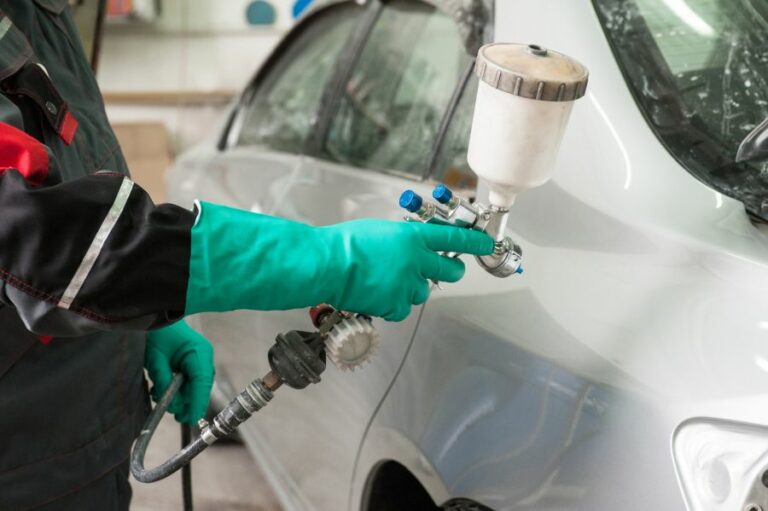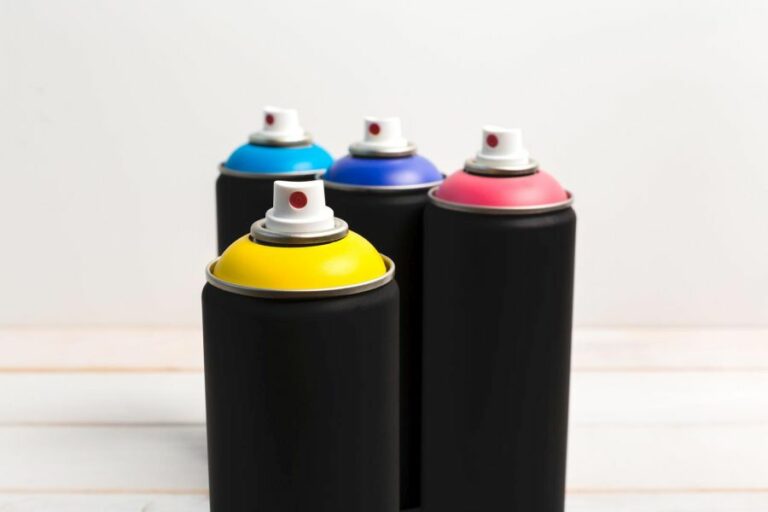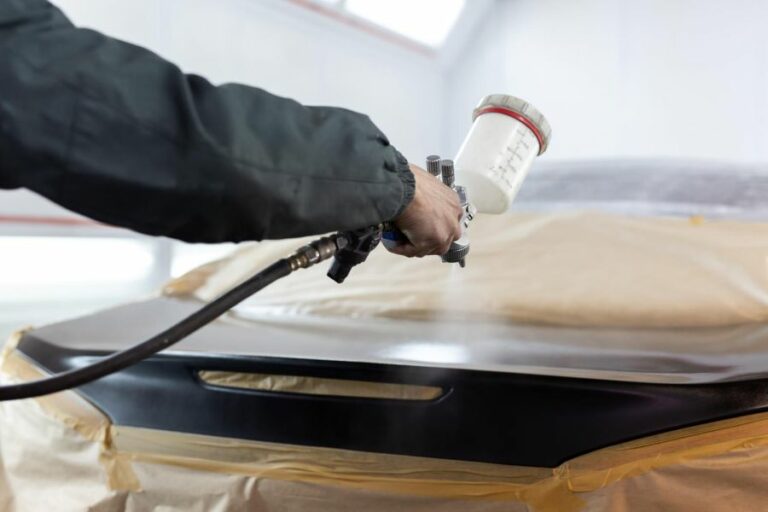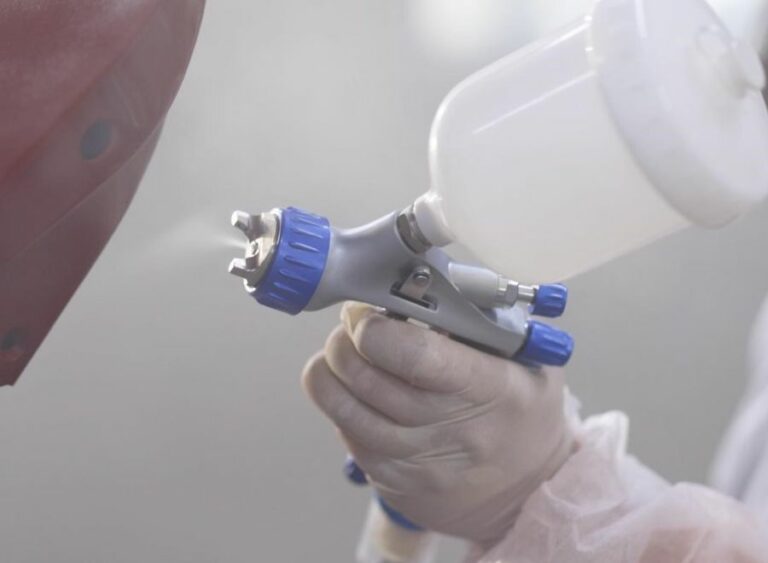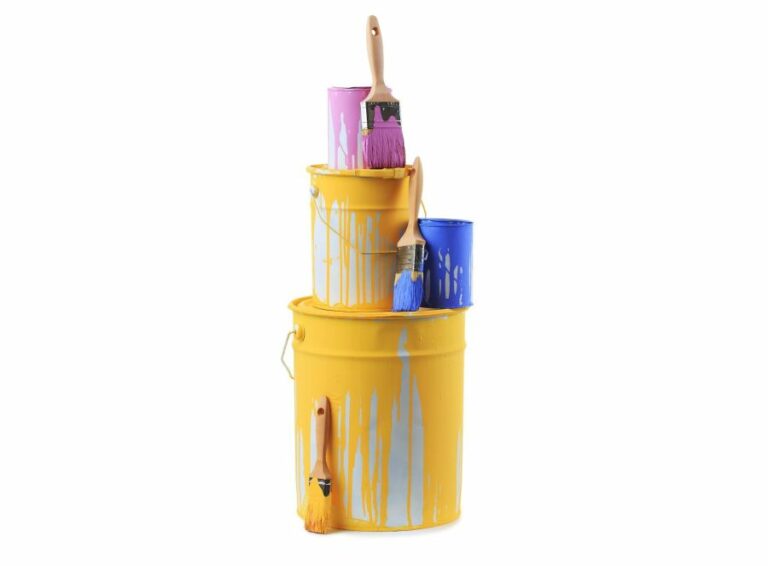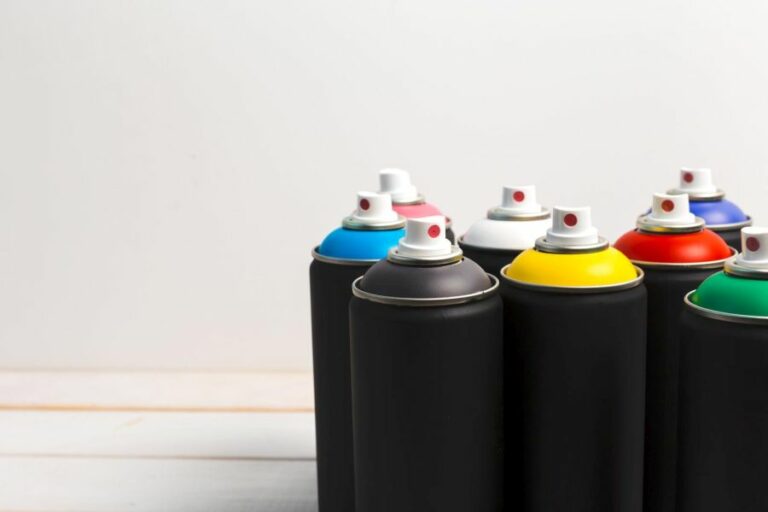Methods To Remove Spray Paint, In & Out. What Pros Say
Dealing with stubborn spray paint residues can be daunting, especially when they’re all over your possessions, indoors and outdoors. Fear not; we’re here to help you tackle this issue successfully. In this discussion, we’ll explore some tried-and-tested methods to remove spray paint from a variety of surfaces.
Methods to remove spray paint, in & out:
To remove spray paint from indoor and outdoor surfaces, consider various methods such as chemical paint removers, paint thinner or solvent, scraping, sanding, pressure washing, and heat treatment. Always follow safety precautions and manufacturer instructions, and choose an appropriate technique based on the surface type and paint stain.

Eager to get rid of unwanted spray paint ruining your surfaces and belongings? You’re in luck! We’ve got detailed techniques for both indoor and outdoor cleaning right here. Keep reading and restore your space with ease.
Contents
- 1 Techniques for Eliminating Spray Paint Indoors & Outdoors
- 2 Tips for Removing Dry Spray Paint Effectively
- 3 Can Rubbing Alcohol Dissolve Spray Paint? A Deep Dive
- 4 Removing Spray Paint from Metal Surfaces: A Guide
- 5 Hairspray’s Effect on Spray Paint Removal: Fact or Myth?
Techniques for Eliminating Spray Paint Indoors & Outdoors
When it comes to removing spray paint from various surfaces, both indoors and outdoors, there are several methods and techniques available.
Each method has its own set of advantages and disadvantages, depending on factors such as the type of surface, the size and complexity of the paint stain, and the tools and materials you have on hand.
In this comprehensive guide, we’ll discuss some of the most effective methods for spray paint removal, as well as some helpful tips and recommendations based on personal experience.
• Method #1: Chemical Paint Removers
One of the most efficient methods for removing spray paint is the use of chemical paint removers. There are several commercial paint removers available on the market, formulated specifically for removing paint from various surfaces.
When using chemical paint removers, it’s important to follow the manufacturer’s instructions carefully to ensure the safety of both the user and the surface being treated. Additionally, always wear protective gloves and ensure proper ventilation during the application process.
The Environmental Protection Agency provides a list of safer paint removal products that are less harmful to the environment and human health, making them a perfect option for eco-conscious users.
• Method #2: Paint Thinner or Solvent
Another method for spray paint removal involves the use of paint thinner or solvent. Often used interchangeably, these chemicals help to dissolve the paint, making it easier to remove from the affected surface.
Commonly used paint thinners and solvents include acetone, mineral spirits, or denatured alcohol. It’s essential to choose the appropriate solvent based on the surface and paint type, so always consult the paint manufacturer’s guidelines to ensure compatibility.
When applying paint thinner or solvent, follow these steps:
- Pour a small amount of the solvent onto a clean cloth or sponge.
- Gently rub the affected area in a circular motion, careful not to damage the surface.
- Once the paint is dissolved, wipe it away with another clean cloth.
- Repeat the process until the spray paint is fully removed.
Always use proper safety precautions, including gloves and ventilation, when handling paint thinners or solvents.
• Method #3: Scraping and Sanding
For more stubborn spray paint stains or on surfaces where chemicals might cause damage, using a scraping or sanding technique may be more suitable.
– Scraping
Using a paint scraper, plastic putty knife, or a similar tool, carefully scrape away the layers of paint until the surface is paint-free. This method requires patience and precision, particularly for delicate surfaces that can easily be damaged during the process.
– Sanding
Sanding is another effective method for paint removal, particularly on wood, metal, or harder surfaces. Start with a coarse-grit sandpaper, working your way to a finer grit to achieve a smooth finish. For smaller, detailed areas, a fine-grit sanding sponge or steel wool may be more suitable.
Keep in mind that sanding can be a time-consuming and labor-intensive process. A power sander or oscillating tool with a sanding attachment can save time and effort.
• Method #4: Pressure Washing
For large outdoor surfaces, such as fences, walls, or pavements, pressure washing can be an efficient method to remove spray paint. This involves using a high-pressure water sprayer to blast away the paint from the surface.
Before using a pressure washer, ensure that the surface can withstand the water pressure, as more delicate surfaces might be damaged in the process. Additionally, be cautious of the water runoff, as it can carry chemicals and paint particles, potentially harming the environment or your property.
• Method #5: Heat Treatment
Applying heat to the spray paint is another useful technique for paint removal, particularly on metal surfaces. This method can be executed using a heat gun or a propane torch, carefully moving the device over the painted area to soften the paint.
Once the paint is softened, use a scraper or a similar tool to gently remove the paint from the surface. Just like with other methods, safety precautions, such as wearing heat-resistant gloves and eye protection, are essential.
• Final Thoughts
Removing spray paint can be a challenging and time-consuming task, but with the methods discussed in this article, you’ll have several options to choose from based on the surface type and your personal preferences.
Remember to follow safety precautions and manufacturer instructions for all tools and chemicals, and be patient during the process. With the right approach and persistence, you’ll soon have your surfaces looking as good as new.
Tips for Removing Dry Spray Paint Effectively
Spray paint is useful for many applications, but it can also create a mess if it dries on unintended surfaces.
• Prepare the Affected Surface
A critical first step in removing dried spray paint involves preparing the surface properly. This helps ensure the right technique is used, as well as minimizes the risk of damage to the underlying material.
- Identify the material: Assess if the surface is made of wood, metal, plastic, or fabric. Some methods may work on specific materials but not on others, increasing the risk of damage.
- Determine the extent of spray paint: The amount of dried paint on the surface can affect the difficulty of the removal process. A small spot may be easier to remove than an extensive area.
- Test a small area: As a precaution, always test a small, inconspicuous area first to ensure that your chosen technique does not cause any harm or discoloration to the surface.
• Types of Materials and Recommended Techniques
The following recommendations are grouped according to the material you are working with:
– Removing Dried Spray Paint from Wood
- Sanding: For wood surfaces, sandpaper or a sanding block can be used to gently remove dried spray paint. Start with finer grit sandpaper (120 to 180 grit) and progress to coarser grit (80 grit) if needed. Be sure to sand in the direction of the wood grain to avoid scratching.
- Chemical paint removers: Apply a paint stripper or a high-quality paint remover on the dried spray paint. Always follow the manufacturer’s instructions and test a small area before using. Allow the chemical to penetrate the paint for the prescribed time, then gently scrape the softened paint away with a plastic scraper.
Purdue University recommends using a paint stripper for wood surfaces as it can easily remove the paint without causing damage. Make sure to use the appropriate safety gear, such as gloves and goggles.
– Removing Dried Spray Paint from Metal
- Solvents: To remove dried spray paint from metal, use a solvent like acetone, rubbing alcohol, or lacquer thinner. Apply the solvent to a cloth and gently rub the affected area. This approach may require a bit of elbow grease to fully remove the paint.
- Fine steel wool: If solvents aren’t doing the trick, carefully use fine steel wool (#0000) to scrub away dried spray paint. To avoid scratching the metal, be gentle and use a bit of water or solvent as a lubricant.
– Removing Dried Spray Paint from Plastic
- Vegetable oil: To avoid damaging the plastic surface, consider using vegetable oil as a gentle alternative to solvents. Apply the oil to a cloth and gently rub the dried paint until it breaks down.
- Warm, soapy water: A mixture of warm water and mild dish soap can also be used to remove dried spray paint from plastic. Gently rub the area with a soft cloth or sponge until the paint wears away.
– Removing Dried Spray Paint from Fabric
- Handwashing: If the fabric is washable, soak the affected area in warm, soapy water for several minutes. Carefully rub the fabric together to break up the dried spray paint, and then rinse thoroughly.
- Alcohol-based solvents: Rubbing alcohol or acetone can be used to remove dried spray paint from the fabric. Apply the solvent to a cloth and gently dab the paint stain, taking care not to spread the paint further.
• Additional Tips for Removing Dried Spray Paint
- Patience is key: Regardless of the method, make sure to be patient during the removal process. Some techniques may take longer than others, and multiple applications may be necessary.
- Clean the surface afterward: Once the spray paint has been removed, clean the surface with a mild detergent and water. This step helps to remove any residue left behind by solvents or other materials.
- Repaint or refinish: If the paint removal process caused damage to the surface, consider repainting or refinishing the area to restore its original appearance.
By following these expert techniques and tips, successfully removing dried spray paint from various surfaces becomes a simple and efficient process. Remember to be patient and always test a small area first to minimize the risk of damage.
Step | Description |
|---|---|
1 | Choose a suitable cleaning agent, such as acetone, rubbing alcohol, or a paint thinner. |
2 | Apply the cleaning agent to a cloth or sponge, ensuring it’s damp but not soaking wet. |
3 | Rub the cloth or sponge gently over the dried spray paint, being careful not to damage the underlying surface. You may need to apply more cleaning agents and repeat the process to fully remove the paint. |
4 | For stubborn stains, consider using a plastic scraper or nylon brush to gently scrub the paint away. |
5 | Once the paint is removed, clean the area with a cloth or sponge dampened with water to remove any residual cleaning agent. |
6 | Dry the area thoroughly with a clean cloth. |
Can Rubbing Alcohol Dissolve Spray Paint? A Deep Dive
When using spray paint, it is important to understand how different materials and substances might interact with it, especially if you’re aiming to remove it or dilute it. One substance in particular, alcohol, is often discussed as a potential solution for dissolving spray paint.
• Types of Alcohol and Spray Paint
Before diving into whether alcohol dissolves spray paint, we must first establish an understanding of the different types of alcohol and spray paints available.
– Alcohol Varieties
There are two main types of alcohol that people may consider using to dissolve spray paint:
- Isopropyl alcohol: Also known as rubbing alcohol, isopropanol, or isopropyl rubbing alcohol, this type of alcohol is commonly used as a solvent and antiseptic. Typically, it is available in concentrations of 70% or 90%+.
- Denatured alcohol: A combination of ethanol (ethyl alcohol) with additives that make it unsuitable for human consumption. It is often used as a solvent, fuel, and cleaning agent.
– Spray Paint Varieties
There are also various types of spray paint, including:
- Enamel: Known for its durability and glossy finish, enamel spray paint is often used for outdoor surfaces such as metal, wood, and even automobiles.
- Lacquer: With a fast-drying time and a glossy finish, lacquer spray paint is commonly used on furniture and other wooden items.
- Acrylic: Known for its versatility and quick-drying properties, acrylic spray paint works well on a wide range of surfaces, including glass, metal, and plastic.
- Water-based: As the name suggests, water-based spray paints use water as a solvent, which makes them environmentally friendly and easy to clean up.
• Interaction Between Alcohol and Spray Paint
Now that we know the main types of alcohols and spray paints, let’s delve into whether or not alcohol can dissolve spray paint.
– Alcohol as a Spray Paint Solvent
Generally speaking, alcohol can be an effective solvent for dissolving spray paint, but its efficiency can be highly dependent on the type of alcohol and the type of spray paint used. Here are some observations:
- Isopropyl alcohol: Isopropyl alcohol is considered the most effective alcohol for dissolving spray paint, especially acrylic-based paints. However, higher concentrations (90%+) are required for optimal results.
- Denatured alcohol: Although not as potent as isopropyl alcohol, denatured alcohol can still be used to dissolve spray paint, especially when it comes to enamel and lacquer-based paints.
– Factors to Consider
Apart from the type of alcohol and spray paint, there are other factors to consider when attempting to dissolve spray paint with alcohol:
- Surface material: The effectiveness of alcohol as a solvent can be impacted by the material on which the spray paint has been applied. For example, alcohol might not be as effective on porous surfaces like concrete compared to non-porous surfaces like metal or glass.
- Age of the paint: The older and more fully cured the spray paint, the more difficult it is to dissolve it with alcohol. Freshly applied spray paint is generally easier to dissolve.
- Amount of alcohol applied: In order to effectively dissolve spray paint, a sufficient amount of alcohol must be used. If applied sparingly, alcohol will not be as effective in breaking down the paint.
• Steps to Dissolve Spray Paint with Alcohol
If you would like to attempt dissolving spray paint with alcohol, here are some recommended steps:
- Prepare the alcohol: Choose either a high concentration of isopropyl alcohol or denatured alcohol for the task.
- Apply the alcohol: Use a clean cloth or sponge to apply the alcohol directly to the spray paint. Ensure it is applied generously for maximum effect.
- Let it sit: Allow the alcohol to sit on the painted surface for a few minutes. This will give it time to penetrate and break down the paint.
- Scrub away the paint: Using a clean cloth or soft bristle brush, gently scrub away the loosened paint from the surface.
- Rinse and repeat: If necessary, repeat the process until the desired amount of paint has been removed.
• Alternatives to Alcohol
If alcohol fails to dissolve spray paint or is unavailable, other solvents can be used instead:
- Acetone: Widely available and effective for dissolving various types of spray paint.
- Paint thinner: Specifically designed to thin and remove paint, making it a suitable alternative.
- Mineral spirits: A petroleum-based solvent that can work well for dissolving enamel and lacquer-based paint.
• Precautions and Disclaimers
Before attempting to dissolve spray paint with alcohol, always follow the safety guidelines:
- Wear protective gloves and eyewear to avoid irritation.
- Work in a well-ventilated area.
- Test the alcohol on a small, inconspicuous area of the surface to ensure it does not cause damage.
Additionally, please note that the effectiveness of alcohol in dissolving spray paint may vary depending on individual circumstances, and there is no guarantee of successful paint removal.
• Conclusion
In conclusion, alcohol can be an effective solvent for dissolving spray paint, depending on the type of alcohol and the type of spray paint used. Isopropyl alcohol, in particular, can be beneficial for dissolving acrylic-based paints.
However, always ensure that proper safety precautions are taken and that you test the alcohol on a small area before proceeding with paint removal.
For further information, consult resources like the Environmental Protection Agency website, which offers extensive information on various solvents and their uses.
Removing Spray Paint from Metal Surfaces: A Guide
Spray paint is a versatile and convenient option for adding a fresh coat of color to any metal surface. However, paint spills, overspray, or even the need to change the paint job may leave you looking for ways to remove spray paint from metal surfaces.
• Natural Solutions for Removing Spray Paint
There are a number of natural solutions that can effectively remove spray paint from metal without causing any harm to the surface.
– Vinegar
Vinegar is a common household item that is acidic and can remove spray paint from metal. To use vinegar, follow these steps:
- Soak a cloth in white vinegar.
- Place the vinegar-soaked cloth on the painted area.
- Let the cloth sit for a few minutes, allowing the vinegar to soften the paint.
- Gently scrub the paint off the metal using a soft-bristle brush.
– Baking Soda
Another natural option is to use baking soda as a mild abrasive to remove paint. Here’s how to use baking soda for paint removal:
- Mix equal parts of baking soda and water to make a paste.
- Apply the paste to the painted area and let it sit for a few minutes.
- Gently scrub the paint off with a soft-bristle brush.
- Rinse the metal surface to remove any residue.
• Chemical Paint Removers
For stubborn spray paint or larger areas, you may need to resort to chemical paint removers. These products are specifically designed to break down paint and make it easier to remove.
– Paint Thinner
Paint thinner or mineral spirits can dissolve spray paint, making it easy to wipe off the metal surface. To use paint thinner for paint removal, follow these steps:
- Wear appropriate safety gear, like gloves and a mask.
- Pour a small amount of paint thinner onto a clean cloth.
- Gently rub the cloth on the painted area, applying pressure as needed.
- Wipe the paint off with another clean cloth.
– Paint Stripper
Paint strippers are a more aggressive option for removing spray paint from metal. These chemicals can remove multiple layers of paint at once. To use a paint stripper, follow these instructions:
- Wear safety gear, such as gloves, goggles, and a mask.
- Apply the paint stripper to the painted area using a brush or spray applicator.
- Allow the paint stripper to work for the recommended amount of time, typically 15-30 minutes.
- Use a plastic scraper or brush to gently remove the loosened paint.
- Rinse the metal surface with water to remove any residue.
Note: Be sure to follow the manufacturer’s instructions for the specific paint stripper you are using, as different products may require different application methods and waiting times.
• Mechanical Techniques for Removing Spray Paint
In some cases, mechanical methods may be effective in removing spray paint from metal surfaces, especially when paired with other methods mentioned above.
– Steel Wool or Sandpaper
Using steel wool or fine-grit sandpaper can help remove stubborn spray paint from metal. When using these abrasives, it is essential to be gentle to avoid scratching the metal surface. Apply light pressure and work in a circular motion.
Tip: For better results, you can also use a combination of abrasives with chemical removers, such as dipping a piece of steel wool in paint thinner and gently scrubbing the painted area.
– Power Tools
For large surfaces or stubborn paint, power tools such as a wire brush attachment on a drill or grinder can be effective in removing spray paint. However, be cautious when using power tools, as they can easily damage the metal surface if not handled properly.
• Final Thoughts and Recommendations
- Always start with the least aggressive method, and gradually work your way to more aggressive methods if necessary.
- Test any method on an inconspicuous area first to avoid damage to the metal surface.
- Wear appropriate safety gear when using chemicals or power tools.
- Dispose of any used chemicals or paint residue according to your local regulations.
For further information on paint removal methods and suggestions, you can visit the US Environmental Protection Agency website, which provides helpful tips and guidelines.
By considering the above techniques, recommendations, and precautions, you can successfully remove spray paint from metal surfaces and restore them to their original appearance.
Hairspray’s Effect on Spray Paint Removal: Fact or Myth?
Spray paint is versatile and commonly used for various purposes, from crafting projects to graffiti. While spray paint can look great on surfaces it is intended for, it can also accidentally end up on areas where it shouldn’t be. No need to worry; there is a surprising solution to this problem: hairspray.
• Hairspray as a Spray Paint Remover
Hairspray contains certain chemicals that are able to dissolve and break down spray paint particles. One key ingredient in hairspray is alcohol, which acts as a solvent in the product.
When applied to spray paint, the alcohol in hairspray helps weaken the bond between the paint and the surface, making it easier to remove.
While hairspray may not be the most potent or effective solution to remove spray paint, it is a common item found in many households, making it a convenient option when you need a quick repair.
• The Process of Removing Spray Paint with Hairspray
Follow these simple steps to remove spray paint using hairspray:
– Preparation
- Make sure the surface you are working on is clean, as dust and dirt may make it harder for the hairspray to work on the spray paint.
- Lay down some newspaper or a drop cloth on the floor or under the surface to catch any runoff from the cleaning process.
- Put on gloves and safety goggles to protect your skin and eyes from the chemicals in spray paint and hairspray.
– Application
- Choose a hairspray with high alcohol content, as it will be more effective at dissolving spray paint. Avoid using hairsprays that contain additional oils, as they may leave a residue on the surface.
- Spray a generous amount of hairspray onto the spray paint stain, ensuring the surface is completely covered.
- Let the hairspray sit on the stain for a few minutes to allow the solvent properties to break down the spray paint.
- Use a soft cloth or sponge to gently rub away the spray paint, working in one direction. Be cautious not to scrub too hard, as it may damage the underlying surface.
- Continue spraying more hairspray and wiping the area until the spray paint is completely removed.
- Once the paint is gone, clean the area with soap and water to remove any remaining residue.
• Alternative Solutions for Removing Spray Paint
– Acetone
Acetone, commonly found in nail polish remover, is a powerful solvent that can easily remove spray paint. Apply the acetone to the spray paint with a cloth, let it sit for a few minutes, and then wipe away the paint. Note that acetone can damage certain surfaces, so use caution and test it on a small area first.
– Paint Thinner
Paint thinner, also known as mineral spirits, can be an effective option for removing spray paint. Apply the paint thinner to a cloth and gently rub it on the paint stain, then wipe it away with a clean cloth. Ensure proper ventilation when using paint thinner, as the fumes can be harmful.
– Rubbing Alcohol
Rubbing alcohol (isopropyl alcohol) is another household item that can be used to remove spray paint. Dampen a cloth with rubbing alcohol and apply it to the paint stain, then use a clean cloth to wipe away the paint. Rubbing alcohol is generally safe to use on most surfaces, but test it on a small area first.
• In Conclusion
Hairspray can be an effective and convenient solution for removing spray paint from various surfaces. By following the application process outlined in this article, you can safely and easily remove unwanted spray paint.
Remember, alternative solutions like acetone, paint thinner, and rubbing alcohol are also effective in removing spray paint, but always test them on a small area first to avoid potential damage to the surface.

